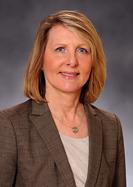The new film “Wonder” tells the story of a young boy who overcomes the challenges of living with the facial structural abnormality known as Treacher Collins Syndrome.
Craniofacial abnormalities are actually pretty common but not always well understood, said Nancy Scherer, Arizona State University professor and chair of the Speech and Hearing Science Department.
Scherer has an appointment on the Barrow-St. Joseph’s cleft palate team, where she conducts research on the efficacy of early speech and language interventions for children with craniofacial conditions. This Sunday, Barrow will host a private screening of “Wonder” for craniofacial patients and their families.
As part of her appointment at Barrow, Scherer helped establish a program for ASU students seeking their master’s or doctorate in speech language pathology that allows them to get clinical experience with assessment and treatment.
Students also assist with research. One project currently in the grant-writing stage hopes to develop an automated speech-analysis system to more accurately track children’s speech and language development over time.
“We’ve really developed a nice variety of opportunities for students and for me as a faculty member who needs access to a clinical population for my research,” Scherer said.
ASU Now sat down with Scherer ahead of this weekend’s release of “Wonder” to learn more about the most common craniofacial condition as well as the one explored in the film.
Nancy Scherer
Question: What are some of the difficulties faced by children with a cleft palate?
Answer: They’re identified at birth, so most of them are followed by a craniofacial team, and as part of that, they’re going to get all their surgeries, orthodontics, all the care they need. But most of the time, we find that early on these kids start out with slower speech and language development because a cleft palate is not usually repaired until about 9–12 months of age. So they kind of miss that first early speech development phase.
Q: Is it a common condition?
A: It’s actually one of the more common birth defects. About 1 in 600–700 children in the U.S. and worldwide are born with a cleft lip and/or palate. So it’s more common than you might think.
Q: How is Treacher Collins Syndrome different?
A: Treacher Collins Syndrome can include a cleft palate but also includes many other craniofacial structural differences. It can cause hearing loss and other problems with speech and even breathing. A cleft lip and/or palate can occur in isolation, or they can occur with other conditions. Usually about 30 percent of those born with a cleft lip and/or palate may have some other associated conditions.
Q: How can craniofacial abnormalities affect kids socially and emotionally?
A: For children with cleft palate, once they have it repaired, they don’t have significant facial deformities anymore. With Treacher Collins Syndrome, there is pretty significant facial deformity, and that can be a huge barrier both for families and for the child. So it’s really important for them to be able to educate the people in their environment to understand the condition because they can become isolated.
Q: Why is it important to educate the public on these kinds of conditions?
A: I think that it’s really important for people to understand that if a child has difficulty speaking that it isn’t necessarily a reflection of their ability to understand or their cognitive development. Most of these kids, with some early intervention, will be able to overcome these problems, and that’s particularly true of children with a cleft palate.
Top photo: In “Wonder,” Julia Roberts stars as the mother of Auggie Pullman (played by Jacob Tremblay), a fifth-grader with Treacher Collins Syndrome who enters a mainstream elementary school for the first time. Photo by Dale Robinette/Lionsgate
More Health and medicine
Is ‘U-shaped happiness’ universal?
A theory that’s been around for more than a decade describes a person’s subjective well-being — or “happiness” — as having a U-shape throughout the course of one’s life. If plotted on a graph, the…
College of Health Solutions medical nutrition student aims to give back to her Navajo community
As Miss Navajo Nation, Amy N. Begaye worked to improve lives in her community by raising awareness about STEM education and health and wellness.After her one-year term ended last month, Begaye’s…

Linguistics work could improve doctor-patient communications in Philippines, beyond
When Peter Torres traveled to Mapúa University in the Philippines over the summer, he was shocked to see a billboard promoting Arizona State University.“It wasn’t even near the university,” said…

